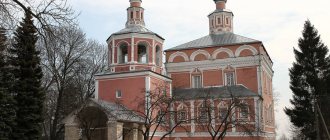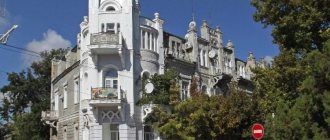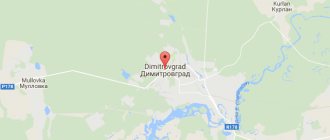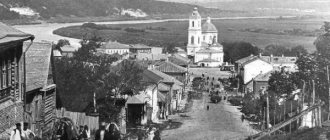The ancient town of Ples, which appeared in the 12th century, is covered with a romantic aura. Its quiet, calm streets are immersed in a leisurely pace of life, and its natural beauty is immortalized in the paintings of the famous Levitan, who spent a lot of time here. Light birch groves, mysterious coniferous forests, spacious beaches on the banks of the Volga - the first thing that catches the eye of visiting tourists. But the ancient town will find something to surprise those who are in search of something original. Even if you have already been here, you will still be able to discover Ples from a completely unexpected side.
How to get to Plyos?
Ples is one of the main tourist centers of the Ivanovo region. The ancient settlement is located on the right bank of the Volga. It is the smallest city in the Golden Ring with a population of up to 3,000 people. Homelike, quiet Plyos huddles next to Ivanovo, Kostroma and Suzdal. It was he who received the nickname “Volga Pearl”.
From the capital to Plyos only 395 km. By personal transport, travel along Yaroslavskoe or Gorkovskoe highway. You can get to the city without a car. The most comfortable way is by fast train “Moscow-Ivanovo” from Kursky Station. The Swallow runs daily four times a day, the entire journey takes 3 hours 40 minutes. There is a regular bus or taxi from Ivanovo to Ples. In addition to the train to Plyos, there is a direct bus departing from Shchelkovsky station.
Attractions in the vicinity of Plyos
Near Plyos there are several preserved estates. Retiring military men and nobles who moved here from the capital lived here; F. Chaliapin acquired a dacha in these places.
Estate "Alekseevskaya"
- Address: s. Nogino.
The estate is located in the village of Nogino, 6 km from Ples. The estate was built between 1785 and 1800. Its owner, a retired guards officer, built a mansion in the style of the famous park in Petrodvorets.
In the center of the estate is the master's house, surrounded by a park that gradually turned into a real forest. A four-row alley leads to the house, which was used to receive guests arriving at the house. Numerous alleys and paths scatter throughout the park.
The area of the estate is small - less than 10 hectares, but a large pond (more than 11 hectares) visually expands the perimeter. The dacha seems even larger due to its harmonious fusion with the fields and copses surrounding the landmark.
Estate "Quiet Marina"
- Address: 4 km south of Plyos.
Downstream of the Volga, 4 km from Plyos, is the Quiet Marina estate. The estate was built on the high and steep right bank of the river. The coastal hills are cut by ravines and are overgrown with dense mixed forest.
The estate itself “runs down” from the height of the hill along its slope to the river. The estate is bordered on both sides by ravines. They are a natural boundary, dividing the mansion with neighboring properties.
The western side of the “Quiet Pier” borders the Maksimtsevsky ravine, from the east the estate is limited by the Khmelitsky ravine. Once upon a time, the estate was adjacent to F. Chaliapin’s dacha “Khmelnitsy”.
Dacha F.I. Chaliapin
- Address: Shalyapino village.
In 1910, the outstanding singer traveled along the Volga with the artist Klodt. Chaliapin was imbued with the beauty of these places and decided to purchase an estate here. Architect S. Kuznetsov developed the project. The singer finally approved it in 1912.
The small estate of Khmelnytsia becomes the singer’s dacha, where he wanted to live after completing his artistic career. But the dreams of the great bass were not destined to come true. In 1918, he was confirmed as artistic director of the Mariinsky Theater, and the Soviet authorities nationalized his estate. Later it housed a rural commune and a home for starving children of the Volga region.
In 1923, the dacha was expanded with various extensions. The Poroshino holiday home was created on this site. Near the library, in the left wing of the building, a room-museum of the famous singer was organized.
See reviews of other cities in the Ivanovo region - Gavrilov Posad, Shuya, Yuryevets, Palekh and Kineshma
Ples is probably one of the smallest cities, if not in all of Russia, then in the Ivanovo region for sure. Its area is only about 3 square meters. km, and the population is approximately 2 thousand people. But it’s rare to find so many historical and cultural treasures in one place. Probably, like no other, the Russian proverb applies to Plyos - “the spool is small, but dear.”
When to go to Ples?
Holidays in Plyos are wonderful at any time of the year. There is something for everyone here to their liking. In summer, tourists are attracted by holidays on the Volga with boating and sunbathing on the beach, leisurely walks along the embankment and visiting numerous museums.
Anyone who has seen “Golden Plyos” at least once will never ask what to do in Plyos in the fall. Coming here at this time of year, you find yourself in forests and groves shrouded in golden crimson, the mere sight of which will take your breath away. In winter, guests of the city are warmly welcomed by the Milovka ski resort, offering active recreation for every taste. Spring in Plyos can turn anyone’s head with a riot of colors, blossoms and the fragrance of nature. This is the time of awakening and plein airs of local artists. Ancient Plyos is attractive and picturesque all year round. His landscapes just beg to be captured by a camera lens, although no technique is capable of truly conveying the surrounding beauty.
What to see in Plyos?
Poetic and quiet Plyos is one of the oldest Volga settlements. In the 19th century it received the name “Russian northern Switzerland”. The town was visited by many Russian celebrities of the past - Chaliapin, Savrasov, Repin, Rachmaninov and Vereshchagin visited here. But real fame for Plyos was brought by Isaac Levitan, whose best canvases were painted from local landscapes. A few days are enough to see all the sights of Plyos and admire its beautiful views, but you can stretch out the pleasure and stay for a week, because there is always something to do in Plyos. A trip here will definitely be remembered and will warm your soul with warm memories for a long time.
Small train station
But this is not all the meaning of the word. This is also the name of a small internal station of the Volga Railway in the Saratov region, between the Zhulidovo and Mokrous stations. Its location can be seen on the map below.
A passenger train runs through the Ples station twice a day, connecting Saratov and the urban village of Ozinki in the Saratov region. Another purpose of the station is the reception, delivery and dispatch of goods that are loaded with whole cars.
That's what Ples is in this case - it's the name of a small station on the Volga Railway on the Urbakh - Ershov line.
Pearl of Ples - city embankment
The Volga coast is one of the most visited places in the city. It was laid out back in the 18th century by order of Empress Catherine II; the appearance of the embankment was created by the most talented architects of the country. Particular attention was paid to the selection of houses: all buildings on the Volzhskaya embankment have the same stylization, many have survived to this day. There are many piers from which ships depart to Moscow and the Northern capital. While leisurely strolling along the city embankment, you can visit the Levitan Museum, ancient shopping arcades, and also take pictures near a local landmark, the sculptures of the Cat and the Summer Resident.
Landscape Museum
The establishment began its work in 1997. For this purpose, an ancient merchant mansion was specially restored and restored for the exhibition. This is a unique exhibition dedicated to landscapes, which has no analogues in all of Russia. The outskirts of the city attracted many Russian painters with their picturesque views. Levitan, Savrasov, Vereshchagin were very fond of Plyos. Contemporary artists continue to praise the attractiveness of these places. The museum's funds contain many paintings by talented painters. In addition to permanent or temporary exhibitions, lectures, festivals and other educational events are regularly held here.
Plyos Fortress - a place of ancient defense
From the heights of Cathedral Mountain one can see defensive fortifications built in the distant 12th century. They became the birthplace of the settlement. The first fortress was destroyed by the Tatar-Mongols, the bastion was rebuilt in the 15th century, but over time it also fell from fire. The fortifications were restored again, but the wooden structures collapsed by the 17th century, having not stood the test of time. Only fragments of the defensive rampart and a deep ditch have survived to this day. One of the towers was recreated by archaeologists. The current settlement is recognized as an archaeological site.
City Center – Cathedral Hill
In addition to defensive buildings, Cathedral Mountain contains a lot of other attractions: an ancient cross, church gates, the Assumption Cathedral, a monument to Vasily I. Having climbed to the top, you can enjoy stunning views of the surrounding area. It is incredibly beautiful here both in summer and winter. Tourists love this place for its attractions and magnificent surroundings for photo shoots.
House-Museum of Isaac Levitan
The artist was attached to Plyos with all his soul. He loved this place very much, often visiting the town in search of inspiration. It is believed that it was Levitan’s paintings that made Plyos famous. The museum's exhibitions include works by Levitan himself, as well as his artist friends, and sculptures by talented artists. There is also a memorial room in which he loved to stay. The furnishings of the mansion are arranged as realistically as possible, with characteristic interior details.
White stone church of St. Barbarians
To the east is the Varvara Church. The temple attracts with its sincerity and provincial simplicity. Levitan depicted him in one of his paintings “Golden Reach”. The interior of the church is replete with paintings on biblical themes. The temple building has two parts: a bell tower rising above the city, erected at the beginning of the 18th century, as well as the main building, erected according to historical standards even earlier.
Museum and exhibition complex
One of the attractions of Cathedral Hill is the famous Public Places, built in the 18th century. In the old days, there was a wine warehouse here, then - the city archive. The museum exposition tells visitors about the early period of the history of the Ivanovo region, the appearance of the first people here, their way of life and the peculiarities of the development of nearby areas. The unique exhibits deserve special mention. Among them are ancient cult stones, ancient women's jewelry dating back to the 7th century, and amulets of pagans from the 12th-13th centuries. Particularly popular among tourists is the virtual fitting room, which allows you to dress up in ancient Russian clothes and try on hats using modern interactive technologies.
One of the oldest city churches - the Assumption Cathedral
The Cathedral of the Assumption of the Virgin Mary in Ples is considered one of the oldest churches in the Ivanovo region. In former times, on the site of the cathedral there was a wooden church that burned down in a fire. The modern construction of the church exactly repeats the appearance of the first building. The simple architecture of the temple has a special charm. In those years, priests considered the luxurious decoration of the capital’s churches provocative and garish, unacceptable for God’s place. Every year hundreds of believers come to the Cathedral to perform a religious procession in honor of the Kazan Icon of the Mother of God.
An original decoration of the embankment - a sculpture of a cat
The Plyos cat appeared on the Volzhskaya embankment not so long ago, in 2008. Its prototype was the cat Mukha, who died from a yard dog while protecting her kittens. Residents and guests of Plyos consider the cat sculpture a monument to all lost pets. The concrete figurine of a cat looks thoughtfully into the distance, making everyone want to pet it.
Plyos Trade Square
The only square in Plyos was called Revolution Square after the 1918 uprising, but in 2011, by decision of the City Council, the attraction returned its original name. The Upper Rows, built in the 19th century, have been preserved to this day on Torgovaya Square. On the left side of them is the restored Voskresensky Row, on the right is the exit to Kalashnaya Street.
Oldest city street
On the Kalashnaya shopping street, the first shops, barns and warehouses began to appear in the 17th century. Initially, it was longer; about 200 retail outlets could easily be accommodated here. Several years ago, the historical appearance of Kalashnaya Street was completely restored. Do you want to be at an old fair? Then go for a walk on Kalashnaya Street. There are many souvenir shops here that sell handicrafts made by local craftsmen.
Monuments to Levitan
The first monument to Levitan was erected in Plyos in 1974. The sculpture is located near the painter’s House-Museum. The sculpture is a bust on a granite column. Another stone sculpture of the artist is located on Mount Levitan. The painter is depicted with an easel and a brush, his gaze is fixed on the Volga, the beauty of which he has always admired.
Levitanovsky Cultural Center
Not far from the artist’s memorial museum there is another old mansion, called Levitan Hall. At the end of the 19th century there was a women's gymnasium here. A hundred years later, thanks to the assistance of the government, the mansion was repurposed into a concert hall. Today, numerous cultural events of local and international scale are held here: plein airs, film festivals, classical music festivals.
Monument to the Moscow Prince
In honor of the 600th anniversary of the city, a grandiose restoration of historical sights took place in Plyos. Among them is a monument to Moscow Prince Vasily I. In 1910, the monument was erected by local merchants. It was then believed that the prince’s order marked the beginning of the construction of Plyos in the 15th century, but later historians proved the existence of the Plyos settlement back in the 12th century. At the same time, the first fortification on Cathedral Hill was erected precisely under Vasily I.
Collection of beauty - museum of porcelain, varnish and painting
A unique place, a significant part of the collections of which are art objects of the last century with an ideological orientation. The museum's exhibits include porcelain from Ukrainian and Russian factories, Russian lacquers, Konakovo faience, portraits of the Ivanovo school of painting, specimens from the Lenin period, and Russian majolica. Also among the museum’s collections are paintings by the landscape artist Fedorov, whose sculpture adorns the entrance.
Church architectural ensemble
Those entering Plyos are greeted by the ensemble of the Trinity and Vvedenskaya churches. Temple buildings were erected on the site of a wooden church, first mentioned in 1628. The stone summer baroque Trinity Church was completed in 1812. After 16 years, the construction of the heated Vvedenskaya Church, built in the style of late classicism, was completed. In the first half of the 20th century, the Trinity Church was under threat of demolition by order of the Soviet authorities, but the townspeople defended the construction.
Sculpture "Summer Resident"
A bronze figure of a girl on a bench appeared on the embankment in 2010, on the 600th anniversary of the city. A summer resident in a straw hat and a light dress is a reference to the 19th century, when many capital residents spent the summer in Plyos. The image of the girl is also associated with Sofia Kuvshinnikova, an artist and Levitan’s lover.
Winter Ples
Plyos is beautiful and interesting all year round. People come here to restore their health, relax mentally, and get a boost of creative energy, which is facilitated by numerous cultural events, festivals and exhibitions taking place in the city. The tourism industry formed in Plyos makes it attractive to travelers at any time of the year. But if in the summer it is especially attractive to relax on the banks of the Volga, and in the fall - landscapes drowning in gold, then in winter tourists have some questions. What to do if you come to Plyos for a weekend in winter? Have fun! The small town never ceases to amaze with its endless possibilities for recreation.
Fairy tale
Levitanov's landscapes are always delightful. Hills and valleys, mixed forests, the majestic Volga and small Shokhonka take on special shapes in winter. Snow-covered wooden houses and cathedrals look much more colorful. Everything sparkles white and reflects purity, inviting city guests to take a journey into a winter wonderland.
Winter fun
One of the popular local winter activities is snowmobiling and airboating. Unusual transport is in great demand among tourists. There are even sightseeing tours on airships along the right bank of the Volga, and trips to the Kostroma Ipatiev Monastery are organized. Snowmobiles are used to travel to winter fishing spots for tourists. Near the city there is a modern ski complex “Milovka”, where you can have a great time with your family and have fun. The winter season here begins at the end of November and lasts until April. “Milovka” has everything you need for a quality active holiday. 37 km from the Volga bank there is a safe slope that is simply adored by numerous fans of skiing, snowboarding or riding classic cheesecakes. The complex hosts sports competitions, mass celebrations for the New Year, Maslenitsa, and in honor of the beginning and end of the winter season. Figure skating enthusiasts can improve their skills at the skating rink. After energetic and active entertainment, vacationers enjoy visiting the bathhouse complex built on the mountain. The colorful folk style in which “Milovka” is decorated fills you with energy, gives you a great mood and positive emotions for a long time.
Plyos resort
Among the main reasons to come to Plyos in winter is the crystal purity of the air. For residents of large cities, this is an unaffordable luxury that can be fully enjoyed in the provinces. There are no industrial giants polluting the atmosphere here, so in Plyos you can always breathe deeply. Plyos is one of the resorts in the Central region. It has everything you need to improve your health: a pleasant climate, dense forests and cedar groves, sandy Volga beaches. For those wishing to improve their health, there are numerous sanatoriums and holiday homes where you can not only receive treatment, but also relax. Tourists who come to Milaya Gora often rent rooms in sanatoriums, combining active recreation with wellness treatments.
Museum of felt boots and the Snow Maiden's estate
If winter entertainment in Plyos is not enough, you can connect neighboring cities. From here it’s a stone’s throw to Kostroma and Kineshma. Children will especially enjoy a trip to ancient cities in winter - the Kostroma estate of the Snow Maiden and a trip to the museums dedicated to her will also be interesting for adults. In Kineshma, the Felt Felt Museum, created by the Sokolov family, opens its doors to visitors. The original exhibits of the museum are represented by felt boots of all sizes - from miniature to huge, up to 2 meters high. Each couple has their own special decoration. In addition to shoes, the work tools used in their production are also presented here. Some of the exhibits can be touched, which does not go unnoticed by children.
Etymology of the word
In the Old Russian language, a reach on a river meant a wide, calm place with great depth, where waves constantly splash gently on the shore.
Slavic languages have retained this original meaning:
- in Old Russian “ples” is a straight section of a stream between two bends.
- in Ukrainian “pleso” – widening of the riverbed.
- in Czech and Slovak “pleso” is a deep place.
Found in one of the dialects of the ancient Greek language, the word "palos" has the meaning of "mud, swamp", like the Lithuanian "pelke" and the Latin "pullus". Translations among words from Greek, Latin and ancient Indian languages do not sound very convincing. It’s unlikely that this was the name given to the spacious expanse of the river.
A recognized source is the Hebrew designation for a straight road, a level object, a natural object - piles.
Another meaning has fallen out of use. A long time ago, this was the name given to fish tail.
We recommend reading: How many meters are the coastal water protection zone of a river, reservoir on the map
Provincial atmosphere
In summer and spring, when the city streets of Plyos become crowded with people wanting to admire the beauty of the surrounding area, you can feel the bustle in the air, which does not allow you to fully enjoy the spirit of the province and get acquainted with the sights. Therefore, winter trips are more soulful in this regard. You can take a leisurely walk along the embankment and admire the wooden towers decorated with openwork carvings. After breathing in the frosty air, take a look at the coffee shop. It’s especially pleasant to enjoy the beauty of a snow-covered city by the window with a cup of hot drink.
A trip to winter Plyos is beautiful in its own way: invigorating frosty air and dazzling whiteness all around. You can admire such views endlessly. In the city you can fully relax, combining energetic and contemplative relaxation with quiet, cozy evenings by the fireplace.
In winter, the provincial flavor is felt especially brightly. Beautiful landscapes, clean air and original architecture - a winter holiday in Plyos will charge you with a positive attitude, fill you with energy and inspire. To fully experience this, you need to come here for a few days. The trip is guaranteed to give you an unforgettable experience of exploring local attractions. You will remember this snow-covered town and the majestic Volga bound by ice for a long time.
Despite its miniature size by city standards, Ples is a real treasure trove of surprises. For those who are looking for something new and unknown, he is ready to open many secret places. Just remember to sometimes go off your usual routes, show curiosity, turning onto barely noticeable paths. Who knows, maybe they will lead you to real treasures, allow you to fully breathe freedom, feel lightness and plunge into the bohemian, creative atmosphere of a town on the Volga.











